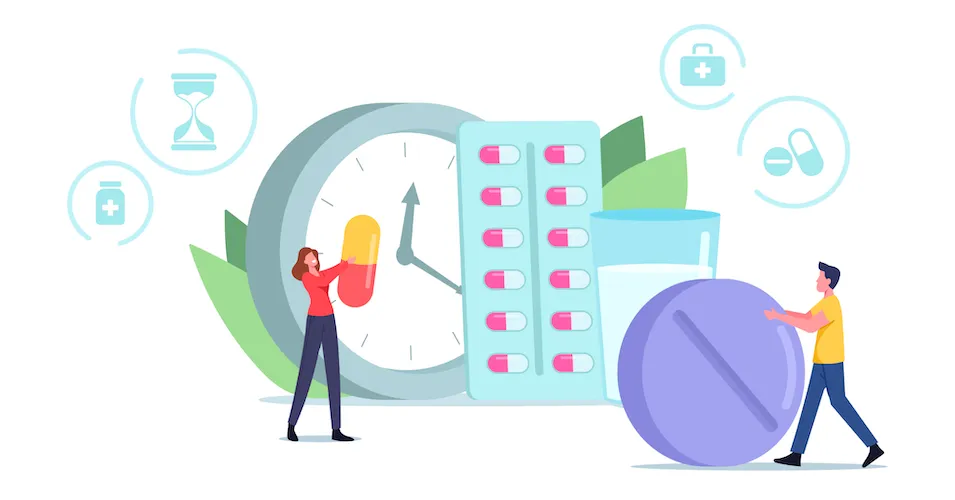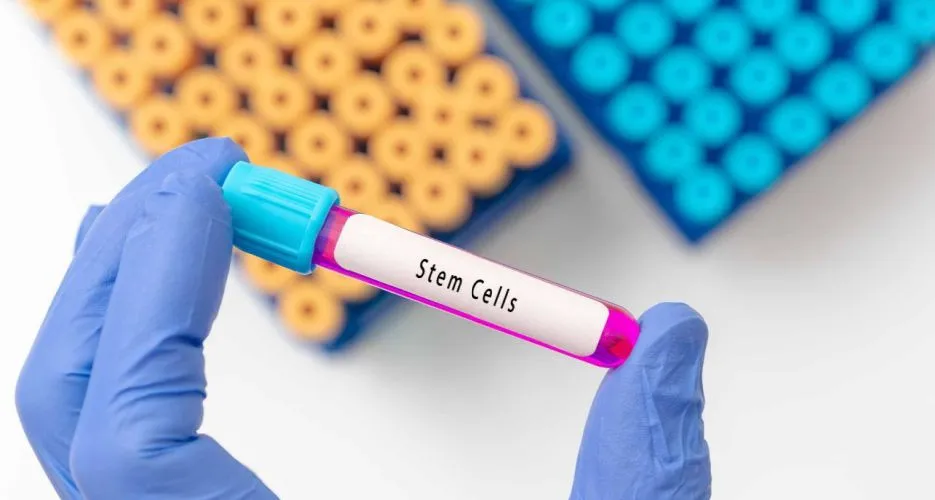Watch and Wait? When Early Intervention Could Benefit Follicular Lymphoma Patients

Dr. Fernando Cabanillas from the University of Puerto Rico Medical School and colleagues studied anonymized follicular lymphoma patient medical records from MD Anderson Cancer Center. This type of look-back research approach is referred to as studying real-world data.
Learn insights from their conclusions about how certain treatment combinations and a new scoring system impacted people with low-grade follicular lymphoma.
This is important to understand because these patients typically remain without treatment and under observation by their doctors, known as the "watch and wait" period. Real-world data studies like the one shared today are important in discovering which subset of patients could benefit from receiving treatment early instead of remaining in watch and wait.
The CDIH Scoring System for Low-Grade Follicular Lymphoma
People with low-grade follicular lymphoma usually have swollen lymph nodes that are not causing symptoms, a low standardized uptake value (SUV) on a PET scan, and a normal lactate dehydrogenase (LDH) level.
Although this form of cancer (low-grade) is currently believed to be incurable, the standard of care has been the watch and wait approach, only followed by treatment later if necessary.
In the real-world study, to separate patient groups, the researchers used a new scoring system called CDIH (clinically discordant indolent histology), which indicates a more aggressive form of low-grade follicular lymphoma.
They found that the CDIH scoring system is more accurate in predicting how follicular lymphoma will behave than the current standard Follicular Lymphoma International Prognostic Index-2 (FLIPI2).
A patient has CDIH low-grade follicular lymphoma if:
- B symptoms are present
- The patient has a high LDH level
- Their SUV is greater than 14 on a PET scan
- Their Ki67 index is greater than 30%
- Cancer cells are found in areas like the lungs, soft tissue, central nervous system, or bones
Comparing Outcomes of Different Treatments for CDIH and Non-CDIH Low-grade Follicular Lymphoma
Their research evaluated the outcomes of 186 people with low-grade follicular lymphoma who decided to receive treatment and not stay in watch and wait. The patient group’s average age was 58.
CDIH Low-Grade Follicular Lymphoma Group
Treatment type: Patients with CDIH-classified low-grade follicular lymphoma received six cycles of R-CHOP (rituximab, cyclophosphamide, hydroxydaunorubicin, Oncovin, and prednisone) followed by four cycles of FND (fludarabine, mitoxantrone, and dexamethasone). This was followed by two years of maintenance therapy with rituximab infusions.
Outcome: At the check-in point of 10 years, the cancer had not progressed (progression-free survival) for 77% of patients with CDIH low-grade follicular lymphoma.
Non-CDIH Low-Grade Follicular Lymphoma Group
Treatment type: Patients with non-CDIH low-grade follicular lymphoma mainly received FND-R (fludarabine, mitoxantrone, dexamethasone, and rituximab). This was followed by two years of maintenance therapy with rituximab infusions.
Outcome: At the check-in point of 10 years, the cancer had not progressed (progression-free survival) for 96% of patients with non-CDIH low-grade follicular lymphoma.
How Patients Responded Past 10 Years
The researchers followed the outcomes of 67 patients for more than 10 years. Only 7% of these patients experienced relapse, and the majority of the relapse cases were those with CDIH low-grade follicular lymphoma.
Summary
Patients with low-grade follicular lymphoma are usually advised to remain in watch and wait, a period in which the slow-growing cancer is monitored but not treated. Researchers evaluated patients who opted to start treatment and, based on a new scoring system called CDIH, reviewed their outcomes.
At the check-in point of 10 years after starting treatment, both patient groups with CDIH and non-CDIH low-grade follicular lymphoma had high rates of remission. This shows that it may be beneficial to treat low-grade follicular lymphoma early.
Subscribe to the Follicular Lymphoma Newsletter
Stay updated on follicular lymphoma news with HealthTree. Subscribe to our newsletter today!
Follicular Lymphoma Newsletter
Source:
Dr. Fernando Cabanillas from the University of Puerto Rico Medical School and colleagues studied anonymized follicular lymphoma patient medical records from MD Anderson Cancer Center. This type of look-back research approach is referred to as studying real-world data.
Learn insights from their conclusions about how certain treatment combinations and a new scoring system impacted people with low-grade follicular lymphoma.
This is important to understand because these patients typically remain without treatment and under observation by their doctors, known as the "watch and wait" period. Real-world data studies like the one shared today are important in discovering which subset of patients could benefit from receiving treatment early instead of remaining in watch and wait.
The CDIH Scoring System for Low-Grade Follicular Lymphoma
People with low-grade follicular lymphoma usually have swollen lymph nodes that are not causing symptoms, a low standardized uptake value (SUV) on a PET scan, and a normal lactate dehydrogenase (LDH) level.
Although this form of cancer (low-grade) is currently believed to be incurable, the standard of care has been the watch and wait approach, only followed by treatment later if necessary.
In the real-world study, to separate patient groups, the researchers used a new scoring system called CDIH (clinically discordant indolent histology), which indicates a more aggressive form of low-grade follicular lymphoma.
They found that the CDIH scoring system is more accurate in predicting how follicular lymphoma will behave than the current standard Follicular Lymphoma International Prognostic Index-2 (FLIPI2).
A patient has CDIH low-grade follicular lymphoma if:
- B symptoms are present
- The patient has a high LDH level
- Their SUV is greater than 14 on a PET scan
- Their Ki67 index is greater than 30%
- Cancer cells are found in areas like the lungs, soft tissue, central nervous system, or bones
Comparing Outcomes of Different Treatments for CDIH and Non-CDIH Low-grade Follicular Lymphoma
Their research evaluated the outcomes of 186 people with low-grade follicular lymphoma who decided to receive treatment and not stay in watch and wait. The patient group’s average age was 58.
CDIH Low-Grade Follicular Lymphoma Group
Treatment type: Patients with CDIH-classified low-grade follicular lymphoma received six cycles of R-CHOP (rituximab, cyclophosphamide, hydroxydaunorubicin, Oncovin, and prednisone) followed by four cycles of FND (fludarabine, mitoxantrone, and dexamethasone). This was followed by two years of maintenance therapy with rituximab infusions.
Outcome: At the check-in point of 10 years, the cancer had not progressed (progression-free survival) for 77% of patients with CDIH low-grade follicular lymphoma.
Non-CDIH Low-Grade Follicular Lymphoma Group
Treatment type: Patients with non-CDIH low-grade follicular lymphoma mainly received FND-R (fludarabine, mitoxantrone, dexamethasone, and rituximab). This was followed by two years of maintenance therapy with rituximab infusions.
Outcome: At the check-in point of 10 years, the cancer had not progressed (progression-free survival) for 96% of patients with non-CDIH low-grade follicular lymphoma.
How Patients Responded Past 10 Years
The researchers followed the outcomes of 67 patients for more than 10 years. Only 7% of these patients experienced relapse, and the majority of the relapse cases were those with CDIH low-grade follicular lymphoma.
Summary
Patients with low-grade follicular lymphoma are usually advised to remain in watch and wait, a period in which the slow-growing cancer is monitored but not treated. Researchers evaluated patients who opted to start treatment and, based on a new scoring system called CDIH, reviewed their outcomes.
At the check-in point of 10 years after starting treatment, both patient groups with CDIH and non-CDIH low-grade follicular lymphoma had high rates of remission. This shows that it may be beneficial to treat low-grade follicular lymphoma early.
Subscribe to the Follicular Lymphoma Newsletter
Stay updated on follicular lymphoma news with HealthTree. Subscribe to our newsletter today!
Follicular Lymphoma Newsletter
Source:

about the author
Megan Heaps
Megan joined HealthTree in 2022. She enjoys helping patients and their care partners understand the various aspects of the cancer. This understanding enables them to better advocate for themselves and improve their treatment outcomes.
More on Treatment Advances
Trending Articles
Get the Latest Lymphoma Updates, Delivered to You.
By subscribing to the HealthTree newsletter, you'll receive the latest research, treatment updates, and expert insights to help you navigate your health.
Together we care.
Together we cure.
3x Faster.








